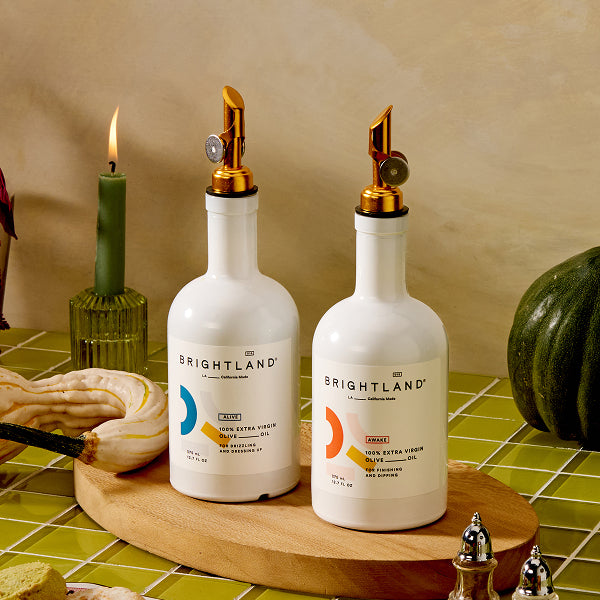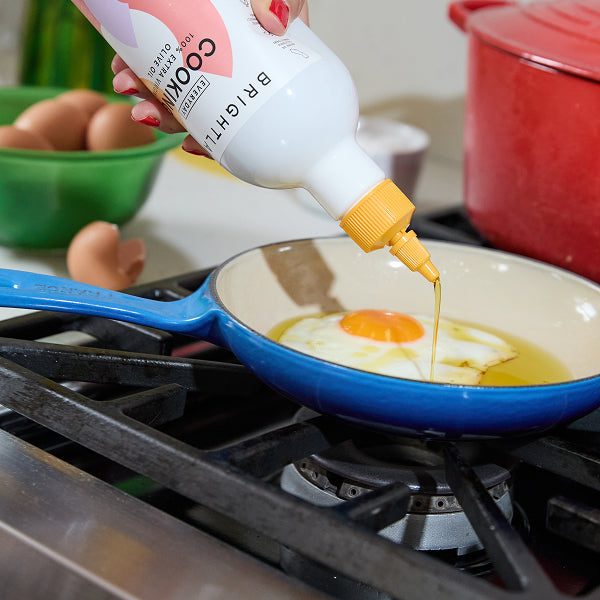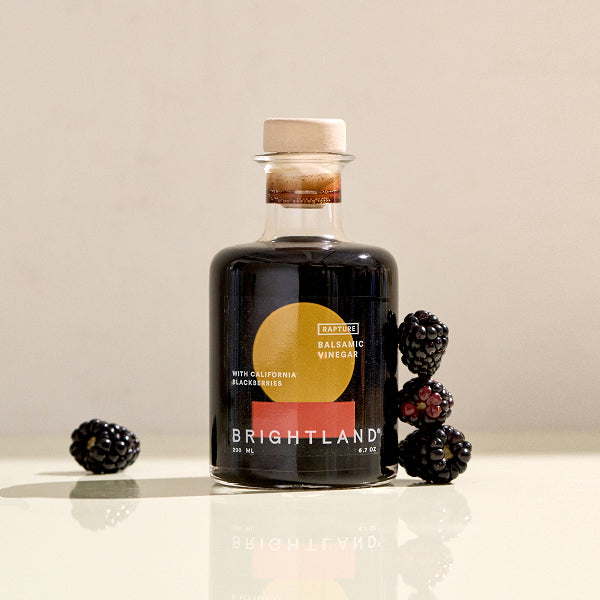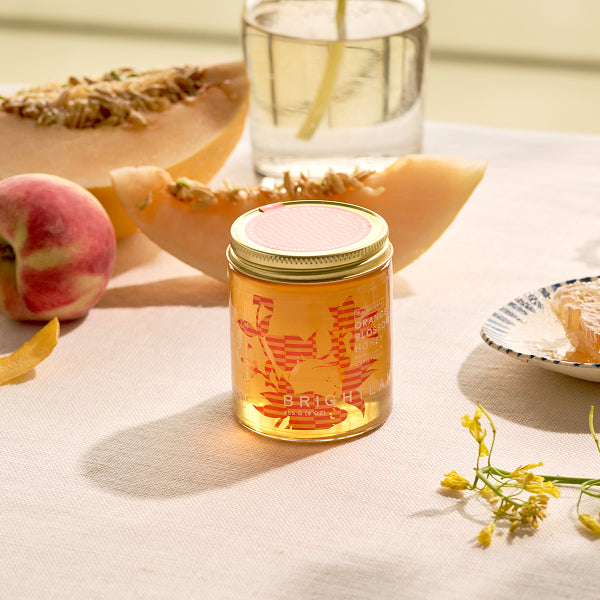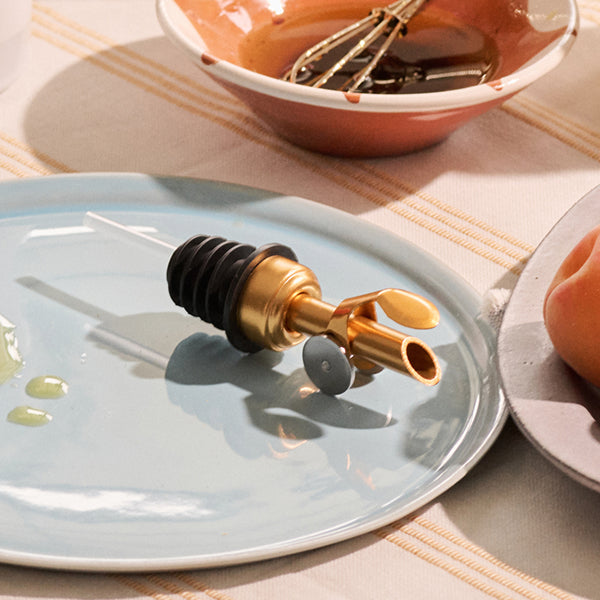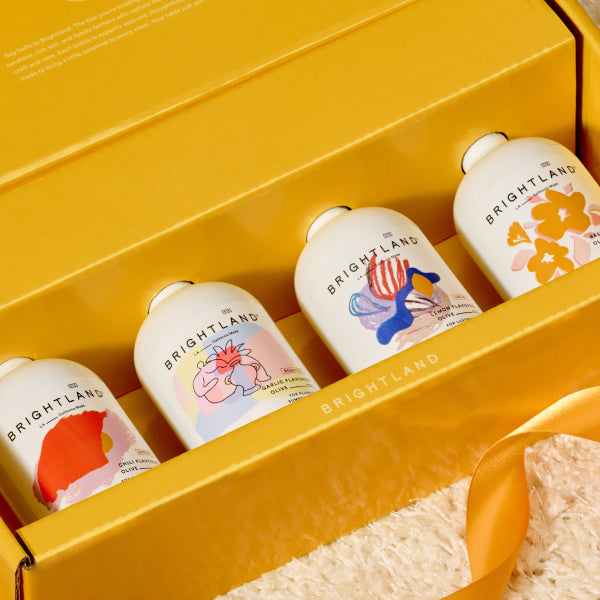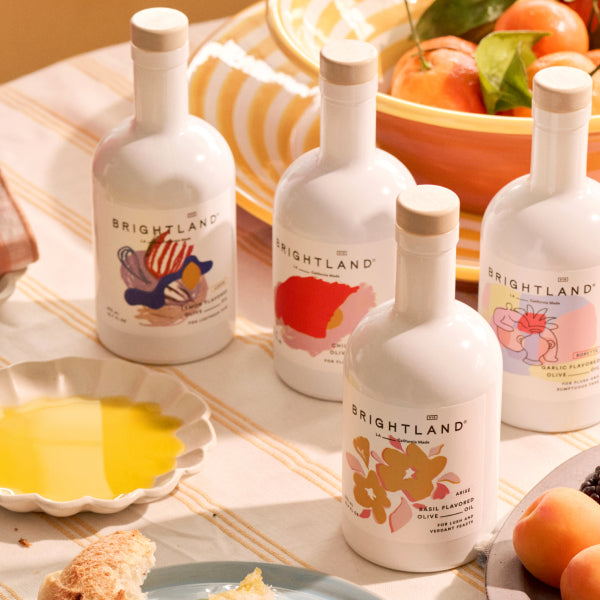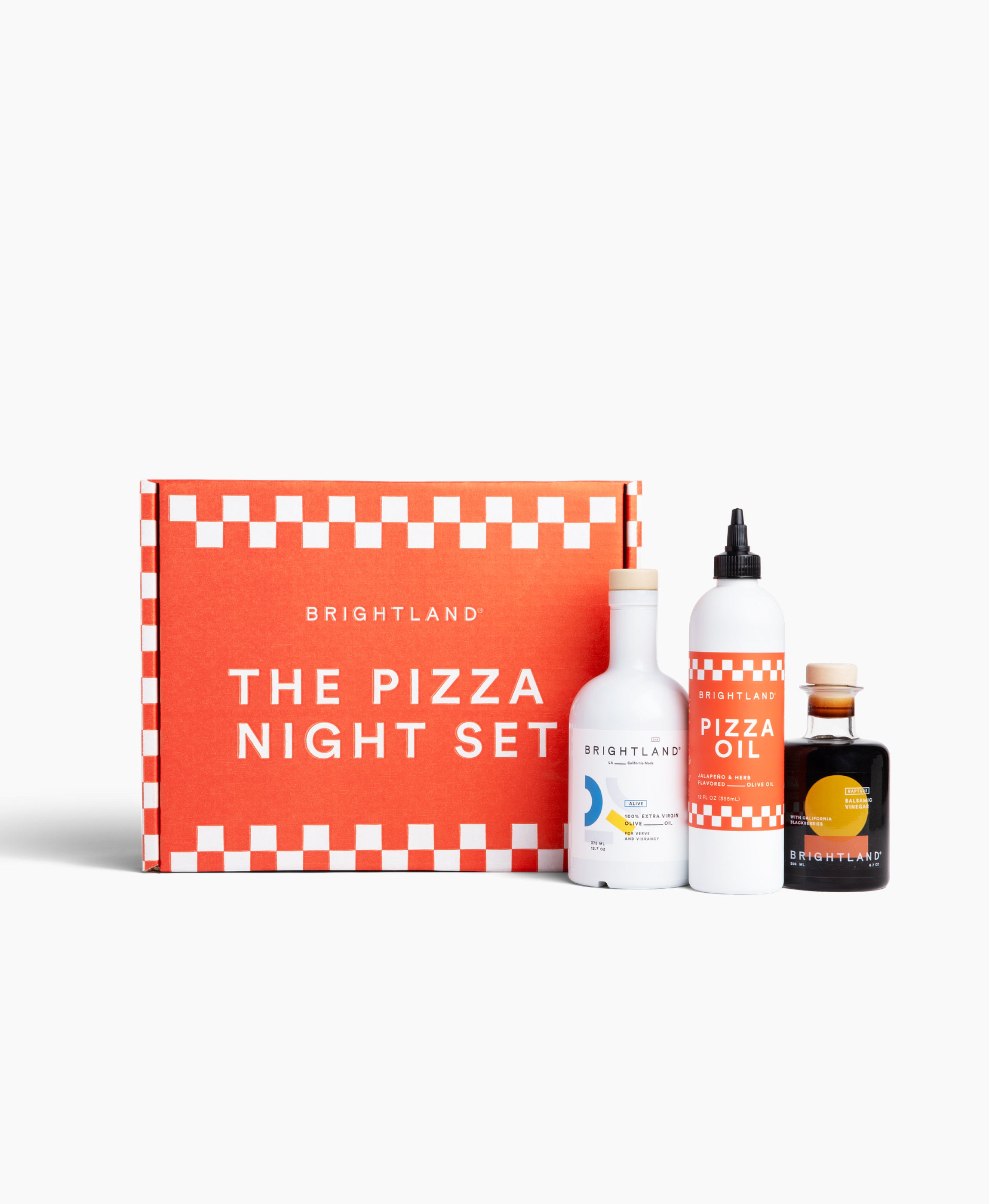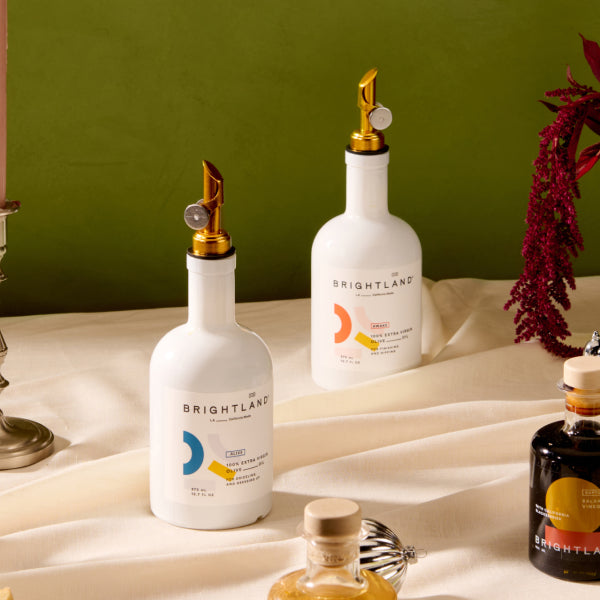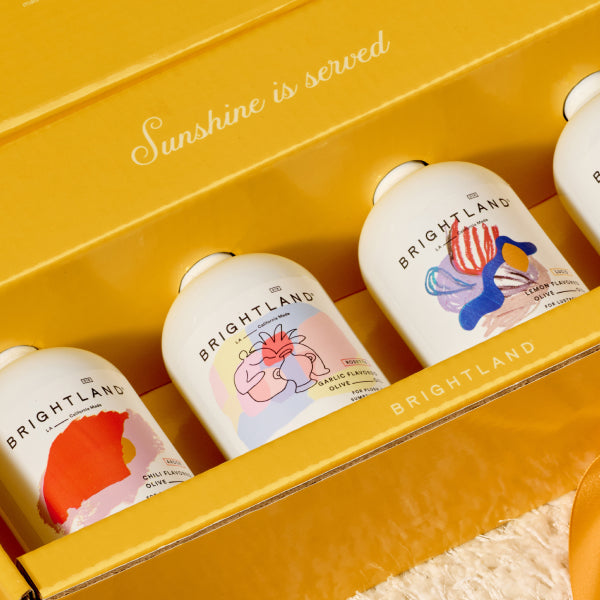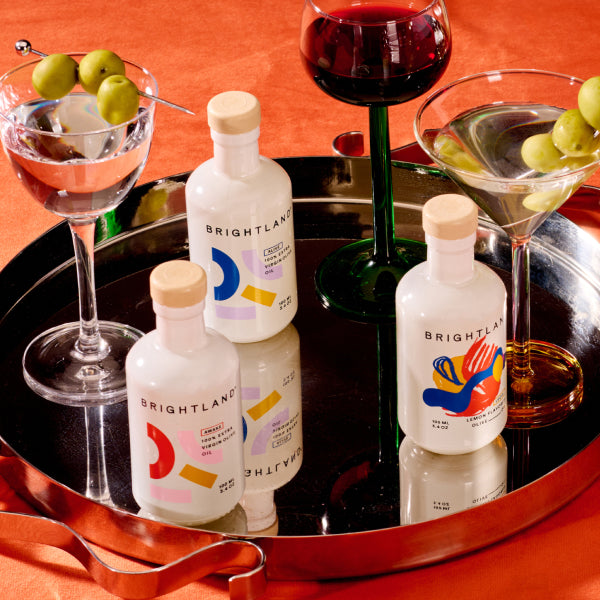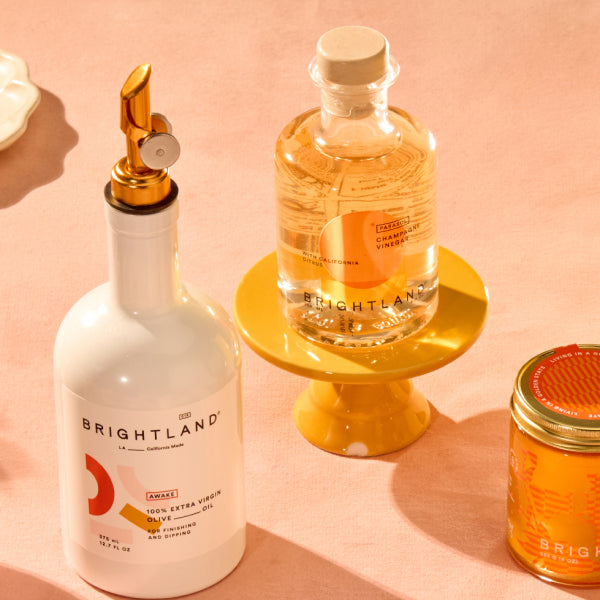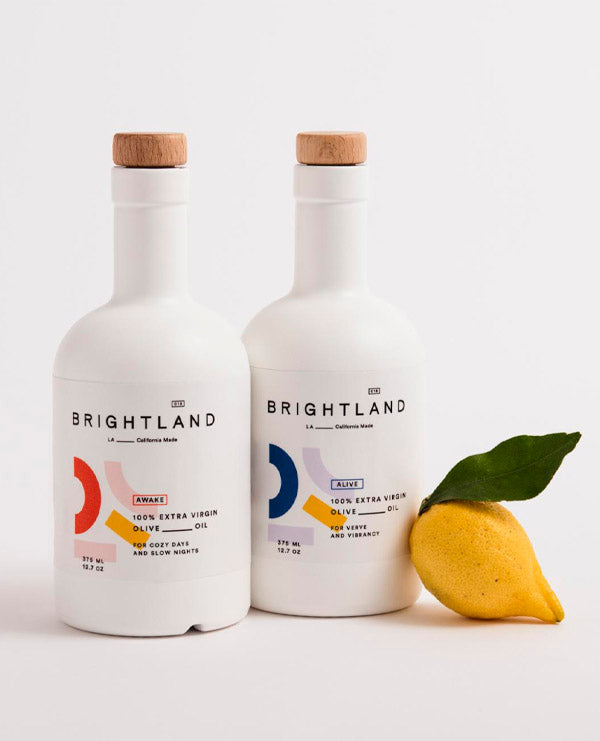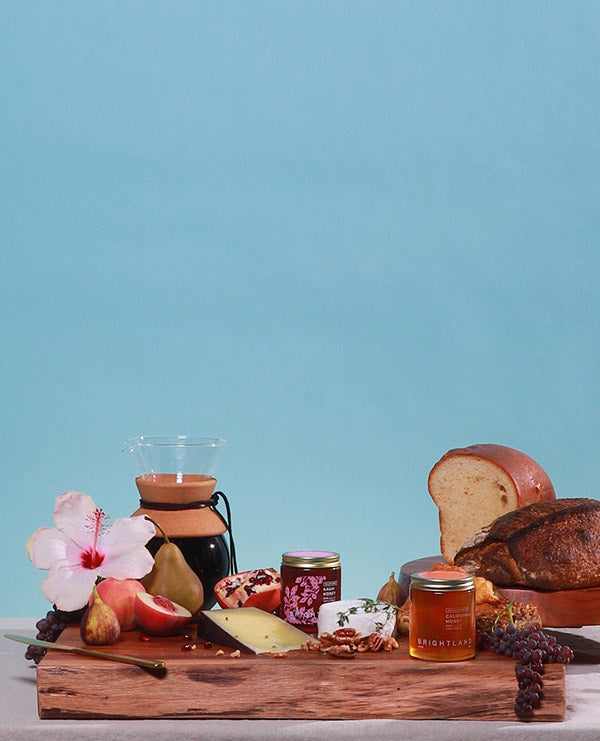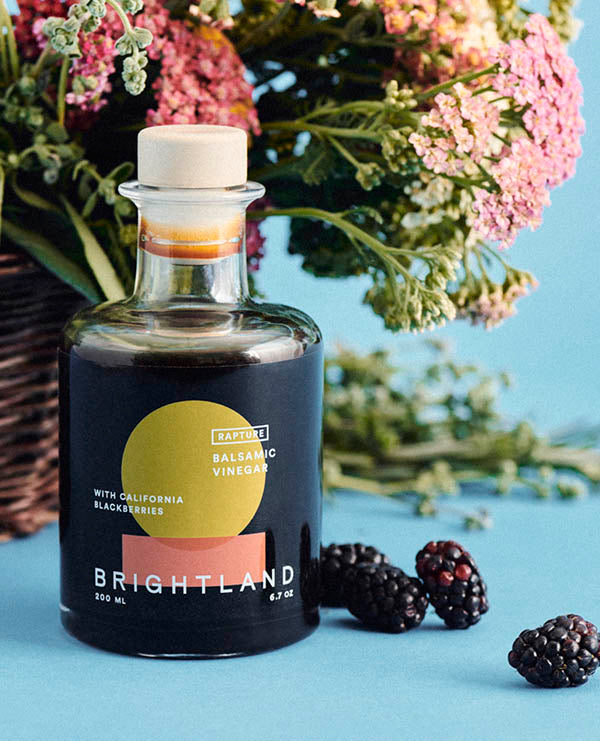[open type="rte"]
Most people have a vague idea that fresh olive oil is better than older olive oil, but they might not be able to articulate why or explain how to shop for fresh olive oil. In this quick guide, we explain why fresh olive oil matters and describe how to shop for fresh olive oil.
[close type="rte"][open type="images" small="true"]

[close type="images"][open type="rte"]
Why Fresh Olive Oil Matters
Unlike wine, olive oil does not get better with age. It does have a pretty good shelf life compared to some other pantry staples, usually 12-24 months after bottling depending on several different factors. However, it will go rancid after a certain amount of time.
Extra virgin olive oil is essentially a fresh-pressed fruit juice that has not been refined, heated or chemically processed to extend its shelf life, so its freshness matters. When pressed properly, high-quality extra virgin olive oil tastes amazing and intensely of olives, but it will eventually degrade as the olive oil particles break down with exposure to heat, light and air, which is why it is so important to use up olive oil and replace it in a timely manner.
Properly storing your olive oil will help it to last longer. Keep it away from the heat and the sun — inside a cool, dry pantry is best. Do not put it in the fridge, as this will cause the olive oil to solidify. (Learn more about how to store olive oil.)
[close type="rte"][open type="rte"]
How to Find Fresh Olive Oil: Reading the Label
The first step to buying fresh olive oil is carefully reading the label before purchasing it. Look for a harvest date that is within 12-16 months of the current date — the sooner, the better. (Keep in mind that a harvest date differs from a bottling date; the latter has no bearing on when the olives were actually harvested—when the freshness timer starts!) Check to see if the olives originated from a specific region or regions, not just a country. There are many different regions within the same country that produce vastly different types of olives, resulting in very different tasting olive oils. Also, check for the varieties of olives used, as this is a major contributing factor to flavor.
Lack of specificity in any of these areas indicates that the olive oil is likely a blend, which increases the likelihood that the older and/or cheaper olive oil will be mixed in. Sometimes, other oils such as canola or vegetable oil may even be added to bulk out the oil and keep down the cost. Because blends often change depending on what ingredients are easily available, companies leave this information off the labels so they can substitute in whatever they want without having to print a new label, which also helps keep production costs low.
[close type="rte"][open type="images" small="true"]

[close type="images"][open type="rte"]
If you want to find this information for any Brightland olive oil, just read the label or check the description online if you have not purchased it yet. We pride ourselves on transparency so that our consumers can always buy with confidence that they are getting the freshest olive oil possible.
[close type="rte"][open type="rte"]
How to Find Fresh Olive Oil: Smelling and Tasting the Oil
Maybe you already have an olive oil sitting in your pantry, or maybe you are at an olive oil tasting. So how can you tell if an olive oil is still fresh if the label will not help you? First, smell the olive oil. It should have a sharp, distinct scent that is some combination of grassy and peppery, depending on the olive varieties used. If it smells like either wax or crayons, then that is a sign that the olive oil is no longer fresh.
If the smell does not give a clear indication, the next step is to taste the olive oil. Principally, it should taste like olives, and it may also have other notes, like buttery, nutty, fruity or even bitter. If the olive oil tastes like nothing, then the oil is no longer fresh. (Unlike some oils, such as canola or vegetable oil, olive oil has a very distinct taste when fresh.) If the oil tastes grubby or dirty, then it has gone rancid and should be thrown out as soon as possible. It is very obvious if the olive oil has gone bad from the smell and taste, so do not worry about accidentally ingesting rancid olive oil without realizing it. (Learn more about whether olive oil goes bad.)
[close type="rte"][open type="images" small="true"]

[close type="images"][open type="rte"]
At Brightland, we harvest our olives domestically in California, which allows us to bottle and ship the product quickly to ensure the freshest olive oil possible. Simply read our labels to find out all the essential information about our olive oils before you purchase. Pick and choose your favorite oils, or order our olive oil set to try out our two most popular oils.
[close type="rte"]

